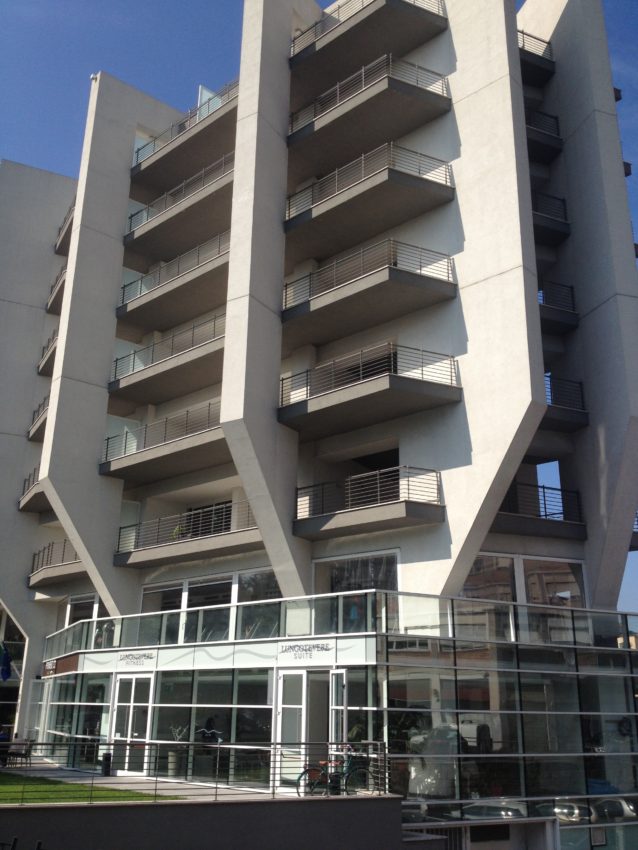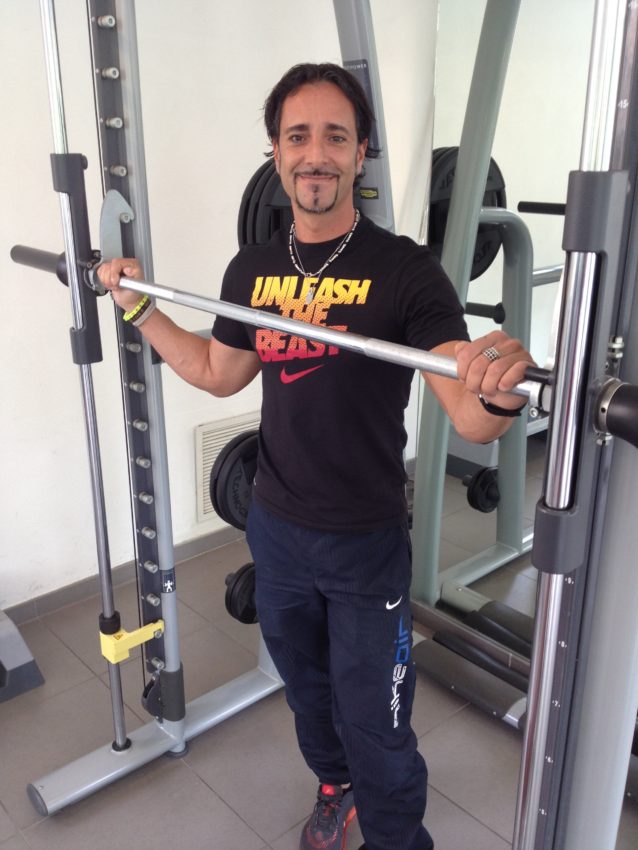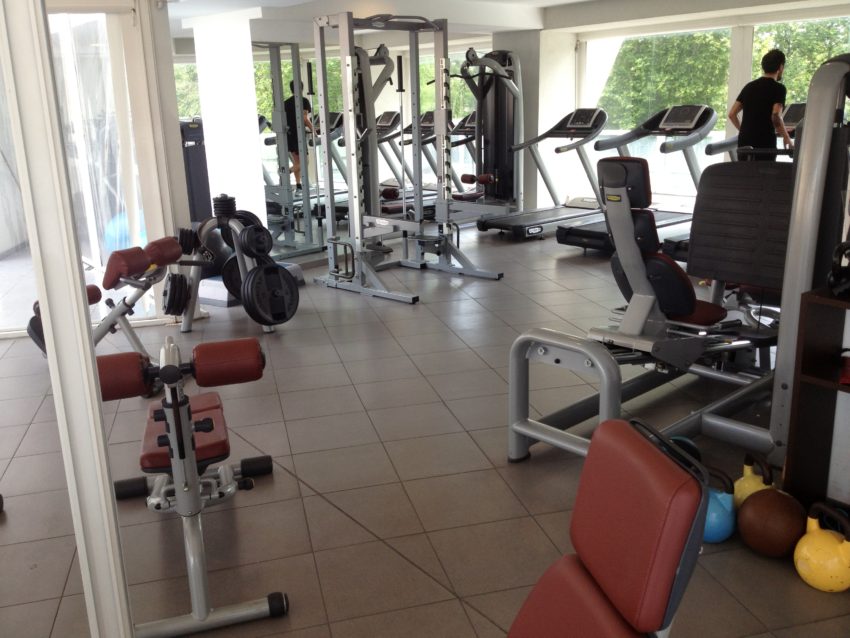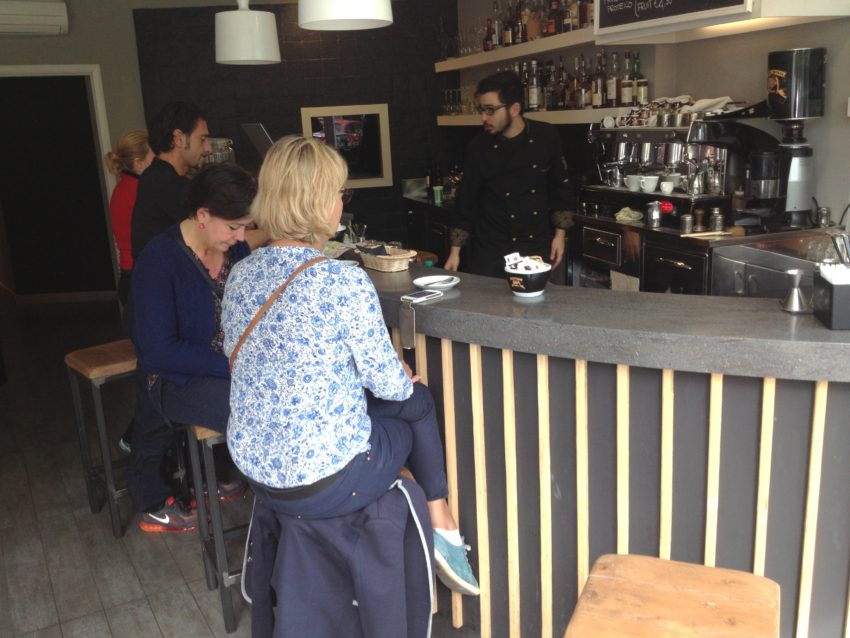Retired in Rome Journal: Search for a gym also a search for Italy’s La Bella Figura





MAY 8
The best shape I’ve ever been in in my life was my year and a half living in Rome the first time. I’m 6-3 and I weighed a solid 205 pounds. I had a flat stomach, defined chest and barely breathed hard in my running club’s outings. How did I get in shape by moving to Rome where the four major food groups are allegedly pasta, cheese, gelato and wine?
I lived across the street from a gym.
When I moved back here in January, finding a gym was one of my priorities. My first neighborhood, Centro Storico, is about 2,500 years old. They used to burn monks at the stake where I was buying tomatoes. Building a gym on streets just wide enough for horse carriages and in buildings protected by historical societies would baffle any civic planner. So I wound up at a place called Farnese Fitness. It’s on a side street that runs off Campo dei Fiori, one of the biggest tourist traps (except for monks) in Rome. Farnese Fitness is one of the smallest gyms I’ve ever seen. If you walked by it would look like a small family run office. It consists of a top floor of about five treadmills next to a small room with some leg machines. Downstairs are a few small rooms arranged around a stone wall. Rooms share weight benches and machines with brick columns that look like they could’ve been signed by Julius Caesar.
A trainer told me the building is 400 years old. That means that Bernini not only could’ve designed this building, he could’ve lifted weights in it, too.
The staff consists of a bunch of young, buff kids who made up for their lack of amenities with wild enthusiasm. The poor guys did the best they could. One shrugged and sheepishly smiled when I pointed out the collars, which hold the weights onto a barbell, were the size of pinkie rings. They charged 30 euros ($40) a week, twice as much as what I paid for a month at Bally’s near my home in Denver, so I only bought two one-week memberships.
And I lost 12 pounds.
As I’ve written before, I looked as awful as I did as a scrawny punch ‘n Judy-hitting outfielder in high school. I was down to 190. Too much walking. Too much fresh food. No beer. Not enough weight training. It sounds like the ideal formula for the masses of Americans obsessed with losing weight. However, I wasn’t one of them. While I can no longer watch the sun come up with a melting margarita in my hand, I still have almost the metabolism of my high school days. I need to lift weights to keep weight on.
So when I moved to my current residence in Testaccio, I was back searching for a gym. Across the river from my building is Trastevere. It was always known as the Bohemian section of Rome. It’s where the artists, writers, communists and hippies lived back in the ‘60s and ‘70s. Today it has gentrified into a teeming restaurant and bar scene without losing the charm from its narrow, windy cobblestone roads that snake from one piazza to another. At the south end of Trastevere, where tacky apartment houses were built in the ‘70s, are two gyms built in the last three years.
Spanking new Silver Fitness had a deal for only 20 euros a month and it’s packed with budget-challenged Romans. The modern equipment and clean rooms were jammed with weightlifters at every station. The front desk was manned by stunning, bored beauties who gave information with all the enthusiasm of supermodels sitting at an airport waiting for their flight to be called.
One block downriver is Lungotevere Fitness. Manuele greeted me in perfect English from working in London for years. For a year’s membership at 54 euros a month I get free consultations with a nutritionist, an osteopath and a trainer. He gave me a tour of the three-story gym, which is connected to a hotel, and it’s as modern as anything in the U.S. A big, clean upstairs with modern equipment and huge windows that open up for a nice cool cross wind breezing through the gym. On the main floor is a fitness room and next to the roomy locker room downstairs are cardio classes with music so loud I thought at first Alitalia had just landed a 747.
I wanted to change up my workout so I was anxious to see what the trainer would say. My trainer is Fabrizio. Fabrizio is so good looking even I can tell he’s good looking. The guy looks like he jumped off a bottle of Italian cologne. He’s sculpted with jet black hair and a goatee. You women who hate Italian beauties because they get all the attention? I hate this guy.
Seriously, he’d spent nearly a year in California training people before recently coming home to Rome. The first thing he did was poke at my stomach. All the weight I had lost wasn’t in the places I wanted to lose it. He put me on a program in which some days I do nothing but core. It’s squats with seven-pound weights, stomach crunches holding medicine balls upright by my feet, lunges and high stepping, lots of running on the treadmill. After the first day, I didn’t wonder if it’s possible to get six-pack abs at 58. I wondered if it’s worth it if I can’t bend over to tie my shoes.
The clientele in Roman gyms isn’t what you see in the U.S. I break down the American population into three groups: one, moderates like me who work out daily but are not obsessed, two, the two-thirds overweight majority who won’t exercise unless their life is threatened; three, the fanatics who bike, lift and run to extremes and don’t eat a grape unless a lab in Zurich inspects it for pesticides.
Only one third of all Italians are overweight. In Rome it’s even less. They walk everywhere. They eat fresh food in smaller portions. They don’t drink much beer. I have yet to see an overweight person in Lungotevere Fitness. I have also yet to see a steroid-crazed bodybuilder. They’re all fit, well-proportioned people in their 20s, 30s and 40s who are merely toning up, not showing off. However, I was, ahem, quite impressed by the blonde built like a lingerie model doing pelvic thrusts with a 25-kilo weight on her stomach.
What was more impressive was Rome had two fitness centers one block from each other. Had Romans changed their views of fitness? Had they advanced their marvelous concept of La Bella Figura (The Beautiful Figure) from merely shape and attitude to health and fitness? I sat down with Roberto Pavoncello, the owner of Lungotevere Fitness. Pavoncello is a distinguished, gray-haired 55-year-old who’s as fit as a Carabinieri cop. He stands 5-foot-6 (average height of an Italian male is 5-9) and weighs a proportioned 150 pounds. He told me since I lived in Denver for the past 11 years, the number of fitness centers in Rome has more than doubled.
Why? Unemployment is reaching 14 percent, the highest since since they started keeping track in 1977. Italy is in its longest recession in 20 years. When the euro arrived in January 2002, the prices went up but the salaries didn’t. Rome is a great place to live — but it’s a hard place to work.
“There really wasn’t a connection before between health and stress,” Pavoncello said. “Roman society is becoming more stressful for many reasons. Since scientific research has been made in health’s connection with stress, we’re becoming more aware. We’re trying to discharge this stress into sports.”
He’d been to the U.S. and to Italian restaurants there. He said, basically, they’re Italian in the sign only. The portions are too huge. The sauces have more ingredients than a computer.
“The problem is not the carbs,” he said. “It’s what you put in the sauce. For instance this evening if we eat together, I take pasta. But I take pasta with olive oil and tomatoes. No other. So I eat pasta but the problem is the condiments. Second, very important, we drink wine. No soft drinks, beer.”
While my gym could pass for any in the U.S., when you walk out you can tell it is still very much Italian. On your way to the door you pass a coffee bar. Outside are members sitting around tables talking with coffee at their hands and fitness bags at their feet.
Some things in Italy, after all, will not change.


July 29, 2014 @ 4:21 am
OK… my two pence: the (admittedly, trite) concept of “bella figura” hasn’t got almost anything to do with the way you dress or look. It’s all about your behaviour e.g., when you’re invited to a party and manage not to embarrass yourself.